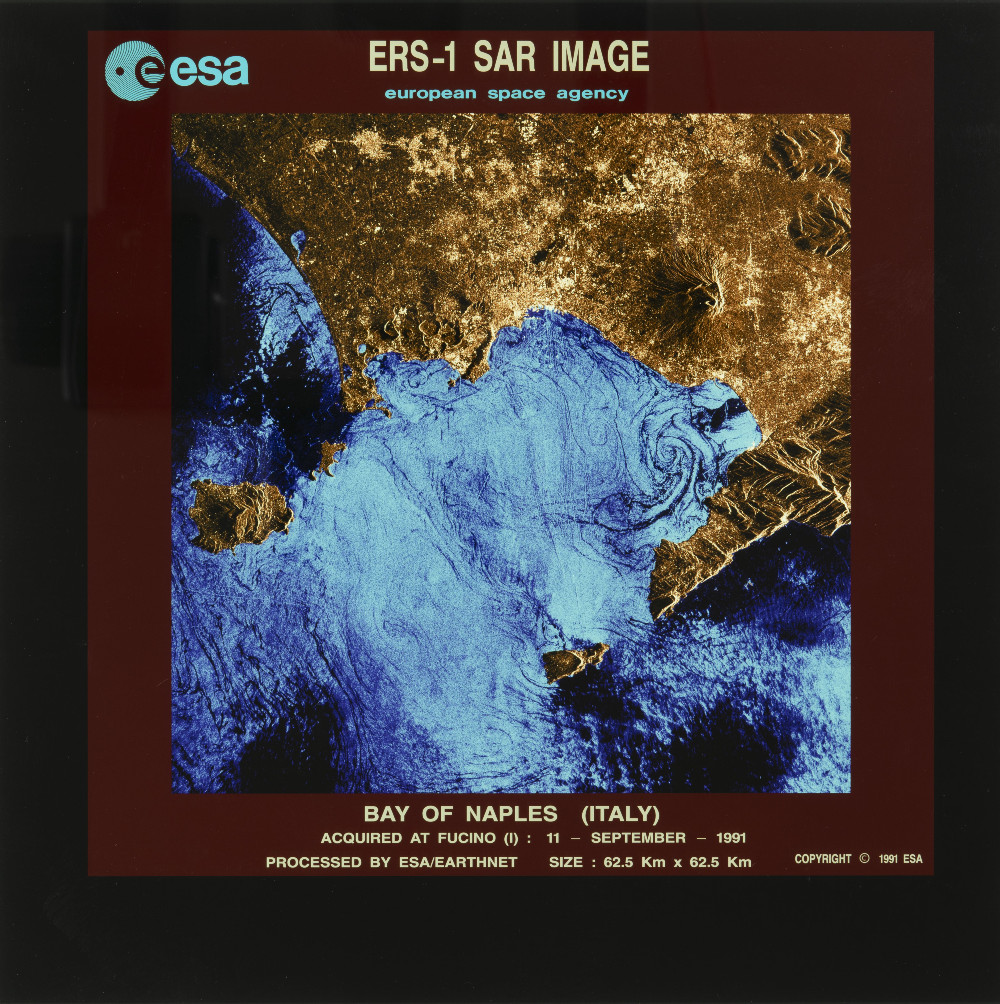Earlier this month we marked the International Day for Monuments and Sites, held on 18 April, with a satellite image of the landscape surrounding the World Heritage site of Toledo for our Object of the Month. Today we continue our programme of openings and celebrate Earth Day, held each year on 22 April, with the full collection of ERS satellite images from which it was taken.
ERS-1, the first European Remote Sensing satellite, was the first environmental monitoring satellite developed by ESA. The ERS-1 mission was launched in July 1991and detected land and ocean surface change and provided observation data on oceans, polar ice, vegetation, geology, meteorology and ecology. It was followed by ERS-2, launched in April 1995, with a similar set of mission objectives and instruments. The ERS-1 mission came to an end in March 2000, while ERS-2 remained in operation until July 2011, when it was retired and ESA began the process of deorbiting. ERS-2 returned to the news this year, on the conclusion of this process, when it reentered the atmosphere naturally and burned up over the Pacific Ocean in February 2024.
Data from the combined ERS missions supported over 5000 projects and contributed to some 4000 scientific publications and revolutionised our perspective of our planet and understanding of climate change. But what happens to all the data when missions come to an end? ESA’s Heritage Space programme, coordinated by its Directorate of Earth Observation Programmes, has the objective to preserve data from ESA heritage missions not in operation anymore, including ERS and Envisat, and from Third Party Missions archived at ESA such as ALOS-1, NOAA POES, and older SPOT and Landsat satellites. The programme offers data from over 45 missions dating back to the 1970s.
Mirko Albani, Heritage Space Programme and Missions manager, describes his role as ensuring that these heritage data are preserved and continue to be accessible to the user community on an open and free basis, topics close to our heart and that we are investigating in depth in our current series of discussions on digitisation. Mirko also notes that “heritage data have an increasingly important role to play alongside the fresh satellite data being produced every day as part of current Earth Observation missions – they can be used to build harmonised long time data series with successor missions, allowing us to map and understand changes affecting the Earth, vital tools for today’s societal challenges and for a sustainable future.’’
While it is crucial that heritage data are preserved for continued exploitation, this particular collection also merits preservation for the simple and astounding beauty of the images. Highlights span the globe, from Antarctica and the Tierra del Fuego in Ushuaia (Argentina) to Zermatt in Switzerland, and include regions with other World Heritage Sites such as Paris in France, Rome and Naples in Italy and Warsaw in Poland, demonstrating both the magnificence of the natural world and the achievements of humanity in the form of the built heritage entrusted to us by past generations.
Which brings us back to Earth Day’s call to protect our planet and to the 2024 International Day for Monuments and Sites, taking as its theme disaster and conflict resilient heritage in the context of the 1964 Venice Charter. (Venice is itself represented in this collection with several ERS-1 images captured from May to August 1992, along with various images documenting events such as the Rhine/Cologne floods in 1993 and fires in Kuwait in 1991.)
This reminds us that satellite data can also be a tool itself for heritage management in disaster or conflict situations. Check this video to find out more the ways space data can be leveraged for the protection of planet Earth and our shared cultural heritage and how ESA is playing its part.
Further information
Read more about the ERS-1 satellite images collection and how to browse it in SHIP.
ERS heritage datasets on the Earth Online portal
Read more
ESA Heritage Space Programme
ERS-2 reentry
International Day for Monuments and Sites
Earth Day






